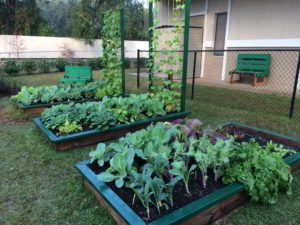Disease management in kales works by reducing the population of the microorganisms causing the disease or slowing down the spread of the disease while growing it. Fungi and bacteria are the most common sources of diseases in Kales. However rare, viruses and nematodes are known to cause an infection in certain cases.
Integrated pest management (IPM) involves combining various management techniques to achieve wholesome protection from diseases and pests. You get a better result from the early stages by implementing prevention mechanisms instead of depending on one final intervention such as fungicides. 9 of them are listed below.
Crop rotation

Crop rotation is a farming practice to avoid growing crops of the same family one after the other on the same piece of land. Instead, you let the land rest for 2 years or grow a crop for a different family.
Crops in the same family as kales are cabbage, broccoli, fungi, bacteria, and nematodes that live in the soil, and crops remain on the ground. These pathogens accumulate to dangerous levels for other plants in the crucifer family such as kales. You can plant crops like maize, sorghum, and other grasses to lower the numbers of root-knot nematodes.
Seed quality

Some diseases like black rot come from bacteria carried on the backs of the seeds you buy. That is just one example. To stay ahead of this problem, you should buy your seeds from reputable companies. They take extra precautions to ensure their seeds have no pathogens.
For instance, they produce their seeds in dry climates. In hot climates, bacteria and fungus, and other pathogens cannot survive. Some companies even test for the presence of black rot bacteria in their kales and crucifer family seeds. After the test, the seeds that pass receive a black-rot certification.
Selection of your site and preparing the land

When it comes to picking a plot of land, a well-drained section is the best option. You do not want a waterlogged farm because that has some challenges like root rot and wilt diseases. Especially for seedlings, which might get the damping-off disease. You should also prepare raised beds on the land for germination.
Raised beds will help drain the root of your plant and reduce waterlogging. In case, you have acidic soils, add lime to reduce the acidity. You can determine the acidity and alkalinity of any soil using a simple soil test. It is measured in pH and a pH of 6.5 is okay. Always record all disease incidences in the field. You will avoid disease outbreaks and be able to intervene on time.
Read More: How To Prepare A Structured Raised Bed For Planting Vegetables
Irrigation practices
Excessive watering or frequent irrigation supports the spread and development of many illnesses. You should avoid it. During seasons when the foliage dries quickly, water should be applied.
Hygiene and sanitation
Equipment and personnel moving in and out of fields can transmit foliar diseases. As they move around, pathogens, from the soil, cling to equipment and footwear. You should clean your equipment and boots before you transition from infested to clean fields.
Also, it is good practice to work from uninfected to infected fields and not the other way around. This way, you reduce the chances of disease spread. To prevent disease spread, fields should not be worked when the leaves are damp.
Weeding
In and around fields, weeds can harbor bacteria and viruses. Black rot bacteria also thrive on weeds like swine cress and Virginia pepper weed. These weeds are commonly found in kale farms. When weed control is done properly, disease spread and carryover are decreased. It is good practise to protect against weeds from as early as the seed bed.
Scouting for diseases
This is when you walk around the farm looking for a sign of disease occurrences. You should scout every week at least once. When you scout, early detection is possible and you can save your crop before it is too late.
Get rid of residues and debris
Most pathogens remain on the debris and soil. You should plow the farm soon after harvest to expose the soil to the sun. The heat from the sun kills the pathogens over time. Plowing will bury the debris and speed up decomposition.
Chemical control

Sprays of fungicides may be required for effective control of fungi-caused illnesses. Copper compounds are utilized to fight bacteria and fungi-related illnesses. Fungicides and copper sprays can help keep healthy plants from becoming infected. However, they can’t aid sick plants. As a result, you should limit spraying before symptoms appear.
Fungicides decay over time. They usually need to be applied every seven to fourteen days to maintain protection. Spray prior to expected rains rather than after. During wet periods, when the infection is most likely, this protection is necessary.
Sprays should be administered in a large enough volume to cover the entire plant. There aren’t that many approved fungicides approved for use on leafy greens. The ones available are controlled. IPM tactics must be used in conjunction with chemical management.
Drench the soil with fungicides
This method is a chemical intervention and should be among the last lines of defense. You can apply fungicides to the soil to reduce the chances of damping-off and root rot diseases.
Summary
In kales, disease management involves minimizing the number of microbes that cause disease. It also works to limit the disease’s spread. You should implement preventative methods rather than rely on a single final intervention. Integrated pest management is the technique for you. It combines several management strategies in order to obtain comprehensive disease and pest prevention.
Read More:
5 Common Diseases In Kales Or Sukuma Wiki And How To Treat Them





[…] On some occasions, you may find pathogens present in the soil. in such cases, the soil testers will show you what you need to do to reduce the risk of the pathogens destroying your crop. For example, in sukuma wiki(kales), you can use integrated pest management techniques. […]
[…] Strategies For Managing Sukuma Wiki Diseases […]